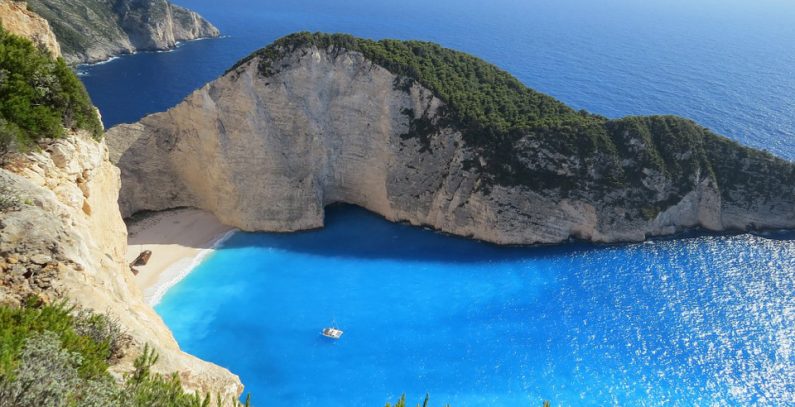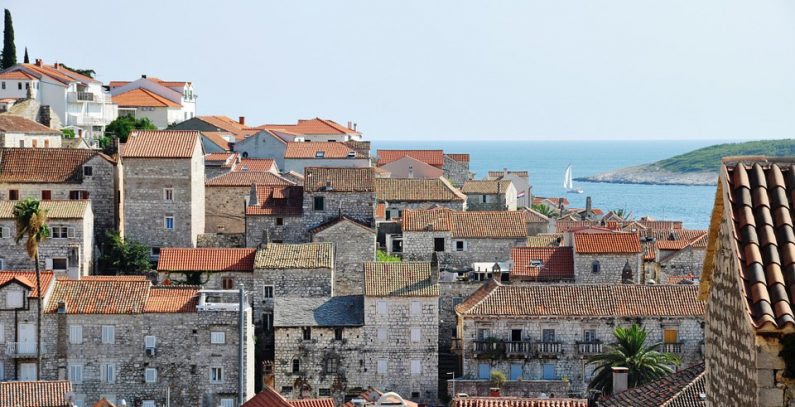
Shipwreck Beach, Zakynthos, Greece (Photo: Pixabay)
Just ahead of summer vacations, the European Commission has released a report on the quality of bathing water in EU member states plus Albania and Switzerland.
The latest annual European bathing water quality report is based on the 2018 data, but the results give a good indication of where the best quality bathing waters are likely to be found this summer, the Commission said in a press release.
An overwhelming number — 95.4% — of the 21 831 bathing water sites monitored in the 28 EU Member States met the minimum quality requirements under EU rules, according to this year’s report by the European Commission and the European Environment Agency (EEA). In addition, 300 bathing sites monitored in Albania and Switzerland were also included in the report.

In four countries, 95% or more of bathing sites were found to have excellent water quality: Cyprus (99.1% of all sites), Malta (98.9% of all sites), Austria (97.3% of all sites), and Greece (97% of all sites). Croatia is also high up on the list (94.4% of all sites), while the percentage in Slovenia is at 87.2%.
Cyprus and Greece among countries with top water quality countries, Croatia not far behind
In Albania, 62% of all sites were found to have excellent water quality. The percentage for Bulgaria is at 52.6% and Romania 56%.

All reported bathing water sites in Cyprus, Greece, Latvia, Luxembourg, Malta, Romania, and Slovenia were of at least sufficient quality in 2018.
The three countries with the highest numbers of poor-quality bathing water sites are Italy (89 bathing water sites or 1.6%), France (54 sites or 1.6%) and Spain (50 sites or 2.2%).
These countries’ percentages of sites with excellent water quality are 90% for Italy, 78.8% for France, and 87% for Spain.
In comparison with 2017, the number of poor-quality bathing water sites in France decreased (from 80 in 2017 to 54 in 2018), while there was an increase in poor quality bathing waters in Italy (from 79 to 89) and in Spain (from 38 to 50).
The contamination of water by faecal bacteria continues to pose a risk to human health, especially if it is found at bathing water sites. Swimming at contaminated beaches or lakes can result in illness. The major sources of pollution are sewage and water draining from farms and farmland. Such pollution increases during heavy rains and floods due to sewage overflow and polluted drainage water being washed into rivers and seas, the Commission said.









Be the first one to comment on this article.